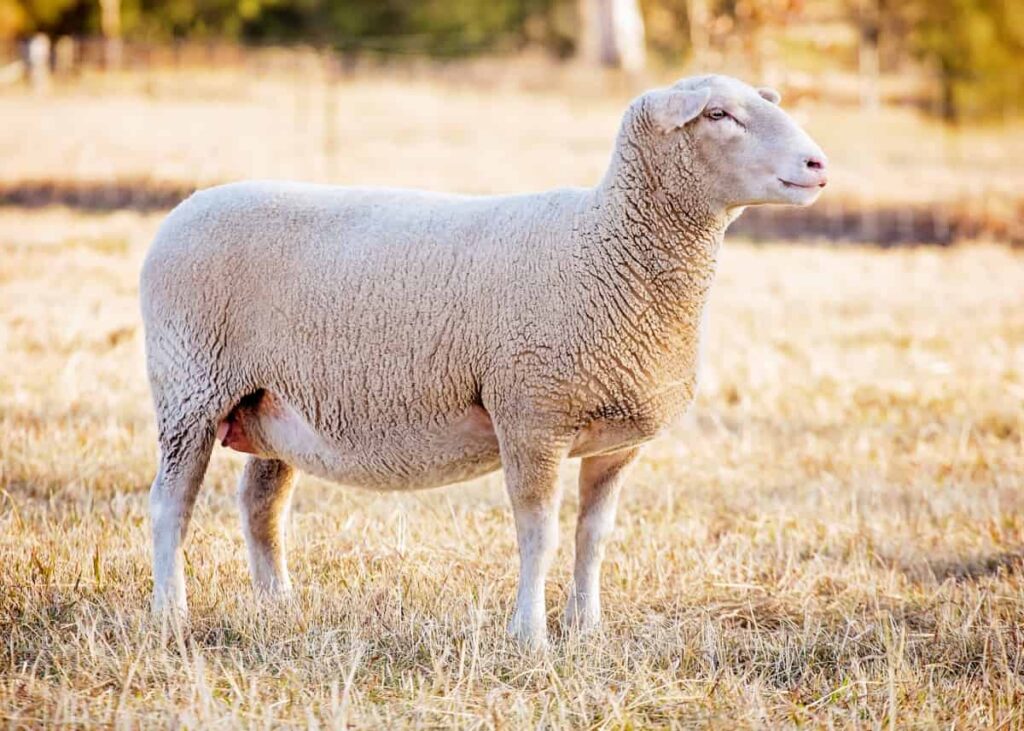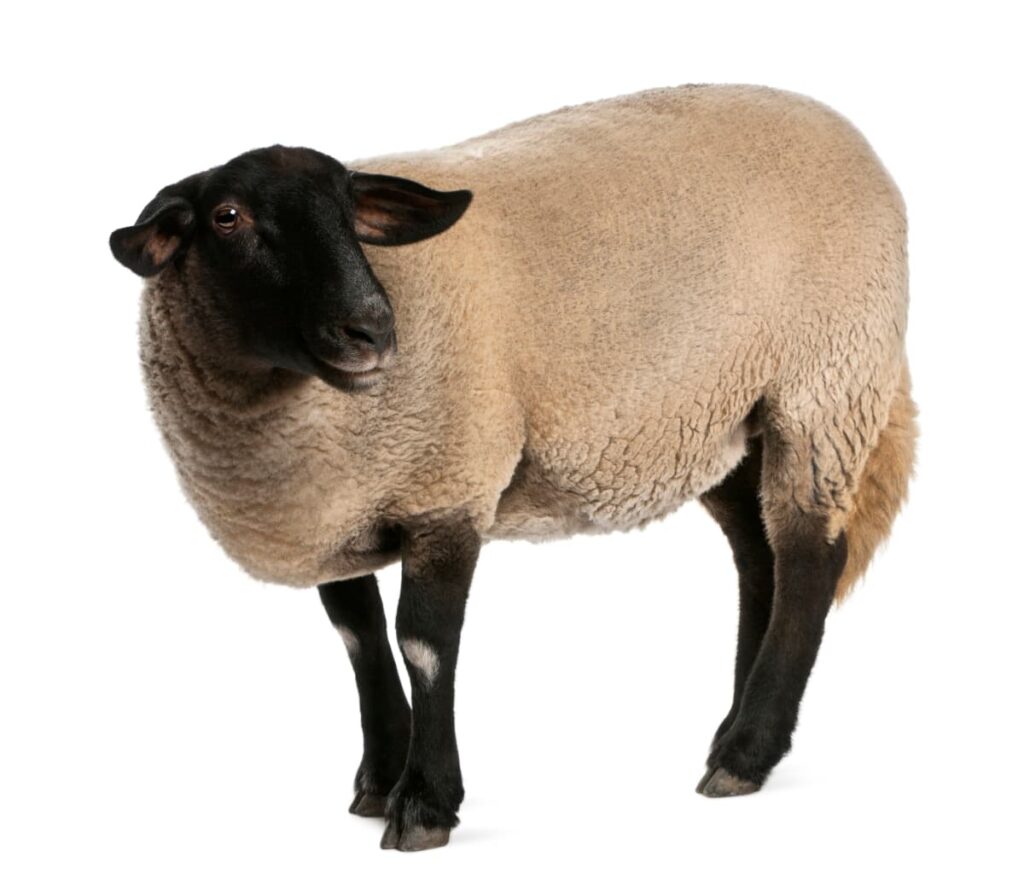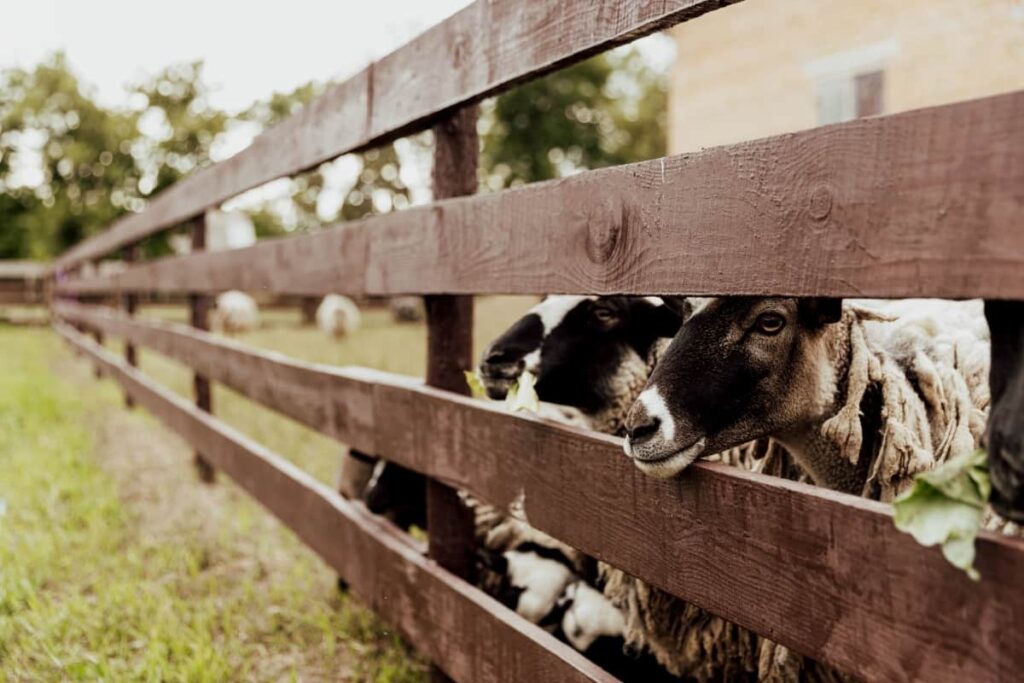Raising Suffolk sheep, known for their distinctive black faces and legs coupled with a robust body, is a common practice among farmers and breeders for their notable meat production and wool quality. While they hold a reputable position in the agricultural sector, managing this breed comes with its own set of challenges and limitations. This article aims to shed light on the disadvantages and hurdles faced when raising Suffolk sheep, providing insights into their specific needs, susceptibility to health issues, and the demands of their care and management in various farming environments.

Suffolk Sheep Disadvantages
Adaptability
Suffolk sheep, originally bred for mild climates, sometimes struggle to adapt to extreme weather conditions. In very hot climates, they are prone to heat stress due to their heavy wool and large body size, which can lead to decreased productivity in terms of meat and wool. Conversely, in colder regions, their large frame requires more energy to maintain body temperature, necessitating additional feed during winter months, which can increase the cost of upkeep significantly.
Fertility
While Suffolk sheep are generally known for their good reproductive rates, they can encounter fertility issues that affect their breeding efficiency. The breed is known for a higher incidence of birthing difficulties, primarily due to the large size of lambs. This not only increases the risk for the ewes during delivery but may also require human intervention or veterinary assistance, leading to additional labor and costs.
Feed Efficiency
Suffolk sheep, with their large frames and rapid growth rates, have substantial feed requirements to maintain their health and productivity. Their feed efficiency can be a disadvantage, particularly in regions where pasture is scarce or during times when feed prices are high. They may require supplementary feeding to meet their nutritional needs, which can significantly increase the cost of raising these sheep.
Wool Quality
Although Suffolk sheep produce wool, their fleece is not as highly valued as that of breeds specifically raised for wool production. Their wool is coarser and less desirable for fine textiles, making it less profitable. This means that while they are excellent for meat production, their wool may not contribute significantly to the overall income from raising Suffolks, which could be a limitation for farmers looking to diversify their revenue streams.
Health Issues
Suffolk sheep are susceptible to certain health issues that require vigilant management and care. They are prone to conditions such as foot rot, a painful and infectious hoof disease, and flystrike, which occurs when flies lay eggs on soiled wool or open wounds. These conditions not only affect the well-being and productivity of the sheep but also necessitate ongoing management efforts and expenses for treatment and prevention.
Market Fluctuations
The market demand for Suffolk sheep, primarily driven by their meat, can be subject to fluctuations, which poses a risk for farmers relying on them as a primary income source. Changes in consumer preferences, market saturation, or economic downturns can affect the profitability of raising Suffolk sheep. This volatility requires farmers to be adaptable and may necessitate diversification of their livestock or farming practices to mitigate financial risks.
In case you missed it: Ultimate Guide to Raising Texel Sheep: Farming Facts, Breed Profile, Uses, and Care

Management Needs
Suffolk sheep, due to their size and growth rate, demand rigorous management in terms of space, nutrition, and general care. They require larger pastures for grazing, and their pens and housing must be spacious enough to accommodate their size, which can be a challenge for farms with limited space. Additionally, their strong flocking instinct means they do better in groups, which requires farmers to keep larger flocks, further increasing the management demands.
Genetic Limitations
While selective breeding has enhanced certain desirable traits in Suffolk sheep, such as their size and growth rate, it has also led to a narrowing of the genetic pool, which can limit diversity and increase susceptibility to genetic disorders. This lack of genetic diversity can pose challenges for long-term sustainability and resilience of the breed, necessitating careful breeding practices to maintain the health and viability of Suffolk sheep populations.
Lambing Complications
Lambing complications are relatively more common in Suffolk sheep due to the breed’s predisposition towards larger lamb sizes, which can lead to difficult deliveries and necessitate intervention. This aspect of Suffolk sheep care demands a high level of vigilance, particularly during the lambing season, as it can lead to increased mortality rates among lambs and health risks for ewes.
The need for potential veterinary interventions during lambing not only adds to the labor and costs involved in breeding Suffolk sheep but also requires breeders to have a certain level of expertise or access to professional assistance. This challenge can be particularly daunting for novice farmers or those with limited resources, making the breeding of Suffolk sheep less appealing in comparison to other breeds with fewer lambing issues.
Parasite Vulnerability
Suffolk sheep’s susceptibility to internal and external parasites is another significant challenge that can impact their health and productivity. Parasites such as gastrointestinal worms can lead to poor growth rates, reduced meat quality, and in severe cases, death. External parasites, including ticks and lice, can cause skin irritations, wool damage, and increased susceptibility to other diseases.
Managing these parasitic threats involves regular and strategic deworming protocols, pasture management to reduce parasite loads, and the use of anti-parasitic treatments, which can be both time-consuming and costly. This aspect of Suffolk sheep management necessitates a proactive approach to health care and biosecurity measures to maintain the wellbeing of the flock and ensure the economic viability of raising this breed.
In case you missed it: Sheep Farming in Uganda: Raising from Scratch for Breeding to Marketing

Conclusion
While Suffolk sheep offer numerous advantages in terms of meat production, their management comes with a set of disadvantages that require careful consideration. The challenges of adapting to diverse climates, managing their substantial feed and space requirements, navigating health issues, and dealing with market volatility all contribute to the complexity of raising this breed. Understanding these limitations is crucial for farmers and breeders to develop effective strategies to mitigate these challenges, ensuring the sustainable and profitable raising of Suffolk sheep.
- Irrigation and Water Management in Pineapple Farming
- Blossom to Harvest: Mastering Flowering and Pollination in Papaya Farming
- Pig Fattening Essentials: From Selection to Sale for Beginners
- Raising Wagyu Cattle: A Complete Guide for Premium Beef Production
- Soil Types and Their Water Holding Capacity
- Optimizing Irrigation Schedules for Coconut Groves for Enhanced Yield
- Espresso Your Garden: Coffee Grounds for Healthier Acid-Loving Plants
- The Best Soil Mix for Snake Plants: How to Mix Your Own Snake Plant Soil
- Green Thumb Success: Expert Tips for Cultivating Greenhouse Beans All Year Round
